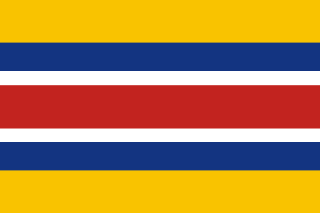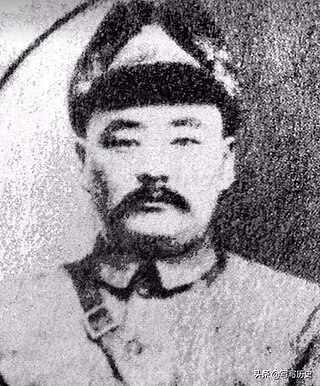This article needs additional citations for verification .(July 2015) |
The Suiyuan campaign was a Japanese attempt to increase the size of their puppet state of Inner Mongolia in 1936.
This article needs additional citations for verification .(July 2015) |
The Suiyuan campaign was a Japanese attempt to increase the size of their puppet state of Inner Mongolia in 1936.
Inner Mongolian Army 1936
Japanese:
Suiyuan Provincial Forces 1936
1st Route Army - Fu Zuoyi
2nd Route Army - Tang Enbo (en route to Suiyuan)
3rd Route Army - Li Fuying (Garrison of Jinbei, Tianzhen, Gaoyang area)
Cavalry Army - Zhao Chengshou
Reserve Army - Wang Jingguo (Garrison of Zhusui, Baotou area)

Mengjiang, also known as Mengkiang or the Mongol Border Land, officially referred to as the Mengjiang United Autonomous Government, was an autonomous area in Inner Mongolia, formed in 1939 as a puppet state of the Empire of Japan, then from 1940 being under the nominal sovereignty of the Reorganized National Government of the Republic of China. It consisted of the previously Chinese provinces of Chahar and Suiyuan, corresponding to the central part of modern Inner Mongolia. It has also been called Mongukuo or Mengguguo. The capital was Kalgan, from where it was under the nominal rule of Mongol nobleman Demchugdongrub. The territory returned to Chinese control after the defeat of the Japanese Empire in 1945.

Demchugdongrub, also known as Prince De, courtesy name Xixian, was a Qing dynasty Mongol prince descended from the Borjigin imperial clan who lived during the 20th century and became the leader of an independence movement in Inner Mongolia. He was most notable for being the chairman of the pro-Japanese Mongol Military Government (1938–39) and later of the puppet state of Mengjiang (1939–45), during the Second Sino-Japanese War. In the modern day, some see Demchugdongrub as a Mongol nationalist promoting Pan-Mongolism, while others view him as a traitor and a pawn of the Japanese during World War II.

The Suiyuan campaign was an attempt by the Inner Mongolian Army and Grand Han Righteous Army, two forces founded and supported by Imperial Japan, to take control of the Suiyuan province from the Republic of China. The attempted invasion occurred in 1936, shortly before the Second Sino-Japanese War. The Japanese government denied taking part in the operation, but the Inner Mongolians and the other collaborationist Chinese troops received air support from Japanese planes and were assisted by the Imperial Japanese Army. The entire operation was overseen by Japanese staff officers. The campaign was unsuccessful, mostly due to lack of training and low morale among the Mongolians and other collaborators. The defense of Suiyuan, one of the first major successes of China's National Revolutionary Army over Japanese-supported forces, greatly improved Chinese morale.

The Inner Mongolian Army, also sometimes called the Mengjiang National Army, referred to the Inner Mongolian military units in service of Imperial Japan and its puppet state of Mengjiang during the Second Sino-Japanese War, particularly those led by Prince Demchugdongrub. It was primarily a force of cavalry units, which mostly consisted of ethnic Mongols, with some Han Chinese infantry formations.

The Battle of Wuyuan was a Chinese counterattack that defeated the Japanese invasion of the Wuyuan area. This happened in reaction to the Chinese 1939-40 Winter Offensive in Suiyuan during the Second Sino-Japanese War. The Japanese call it 第2次後套作戦.
The following units and commanders fought in the Defense of the Great Wall of the Second Sino-Japanese War. List as of 20 March 1933.

Operation Chahar, known in Chinese as the Nankou Campaign, occurred in August 1937, following the Battle of Beiping-Tianjin at the beginning of Second Sino-Japanese War.
Order of battle Beiping–Suiyuan Railway Operation refers to the troops involved in the 1937 Beiping–Suiyuan Railway Operation.
The Japanese and Manchukuoan order of battle for Operation Nekka was:

The Manchukuo Imperial Army was the ground force of the military of the Manchukuo, a puppet state established by Imperial Japan in Manchuria, a region of northeastern China. The force was primarily used for fighting against Communist and Nationalist guerrillas in Manchukuo but also took part in battle against the Soviet Red Army on several occasions. It initially consisted of former National Revolutionary Army troops of the "Young Marshal" Zhang Xueliang who were recruited after the Japanese invasion of Manchuria en masse, but eventually expanded to include new volunteers and conscripts. The Imperial Army increased in size from about 111,000 troops in 1933 to an estimated strength of between 170,000 and 220,000 soldiers at its peak in 1945, being composed of Han Chinese, Manchus, Mongols, Koreans, Japanese, and White Russians. Throughout its existence the majority of its troops were considered to be mostly unreliable by their Japanese officers and advisers, due to poor training and low morale.
The Order of battle Beiping–Hankou Railway Operation
The Inner Mongolian campaign in the period from 1933 to 1936 were part of the ongoing invasion of northern China by the Empire of Japan prior to the official start of hostilities in the Second Sino-Japanese War. In 1931, the invasion of Manchuria secured the creation of the puppet state of Manchukuo and in 1933, Operation Nekka detached the province of Rehe from the Republic of China. Blocked from further advance south by the Tanggu Truce, the Imperial Japanese Army turned its attention west, towards the Inner Mongolian provinces of Chahar and Suiyuan, with the goal of establishing a northern China buffer state. In order to avoid overt violation of the Truce, the Japanese government used proxy armies in these campaigns while Chinese resistance was at first only provided by Anti-Japanese resistance movement forces in Chahar. The former included in the Inner Mongolian Army, the Manchukuo Imperial Army, and the Grand Han Righteous Army. Chinese government forces were overtly hostile to the anti-Japanese resistance and resisted Japanese aggression only in Suiyuan in 1936.
Order of battle for the Battle of Taiyuan in the Second Sino-Japanese War.
The following units and commanders fought in the Battle of Lanfeng in May 1938.
The Battle of Xuzhou was fought in May 1938 as part of the Second Sino-Japanese War.

The 205th Infantry Brigade, was first formed as part of the United States Army Reserve's 103rd Division. It was active from 1921 to 1942 and then from 1963 through 1994, and then reformed in 2006.
The order of battle Chahar People's Anti-Japanese Allied Army in the Inner Mongolia campaign of 1933.

Wang Ying was a Chinese bandit and minor Japanese puppet warlord from western Suiyuan. He was involved in the Chahar People's Anti-Japanese Army in 1933, commanding a formation called the 1st Route. Following the suppression of the Anti-Japan Allied Army, Wang Ying went over to the Japanese Kwantung Army and persuaded them to let him recruit unemployed Chinese soldiers in Chahar Province. He returned to Japanese-occupied Northern Chahar with enough men to form two Divisions that were trained by Japanese advisors. By 1936 Wang was commander of this Grand Han Righteous Army attached to the Inner Mongolian Army of Teh Wang.

The Grand Han Righteous Army (大漢義軍) was a collaborationist Chinese army cooperating with the Empire of Japan in campaigns in northern China and Inner Mongolia immediately prior to the official start of hostilities of the Second Sino-Japanese War.

The 205th Engineer Battalion is an engineer battalion of the Louisiana Army National Guard. It is part of one of the 225th Engineer Brigade, one of largest engineer brigades in the United States Army National Guard. The 205th Engineer Battalion is headquartered in Bogalusa, LA in Washington Parish with the remaining companies and detachments located in St. Tammany, Tangipahoa, Ascension, and Jefferson parishes. The battalion provides command and control to plan integrate, and direct execution of three to five assigned engineer companies and one Forward Support Company (FSC) to provide mobility in support application or focused logistics.